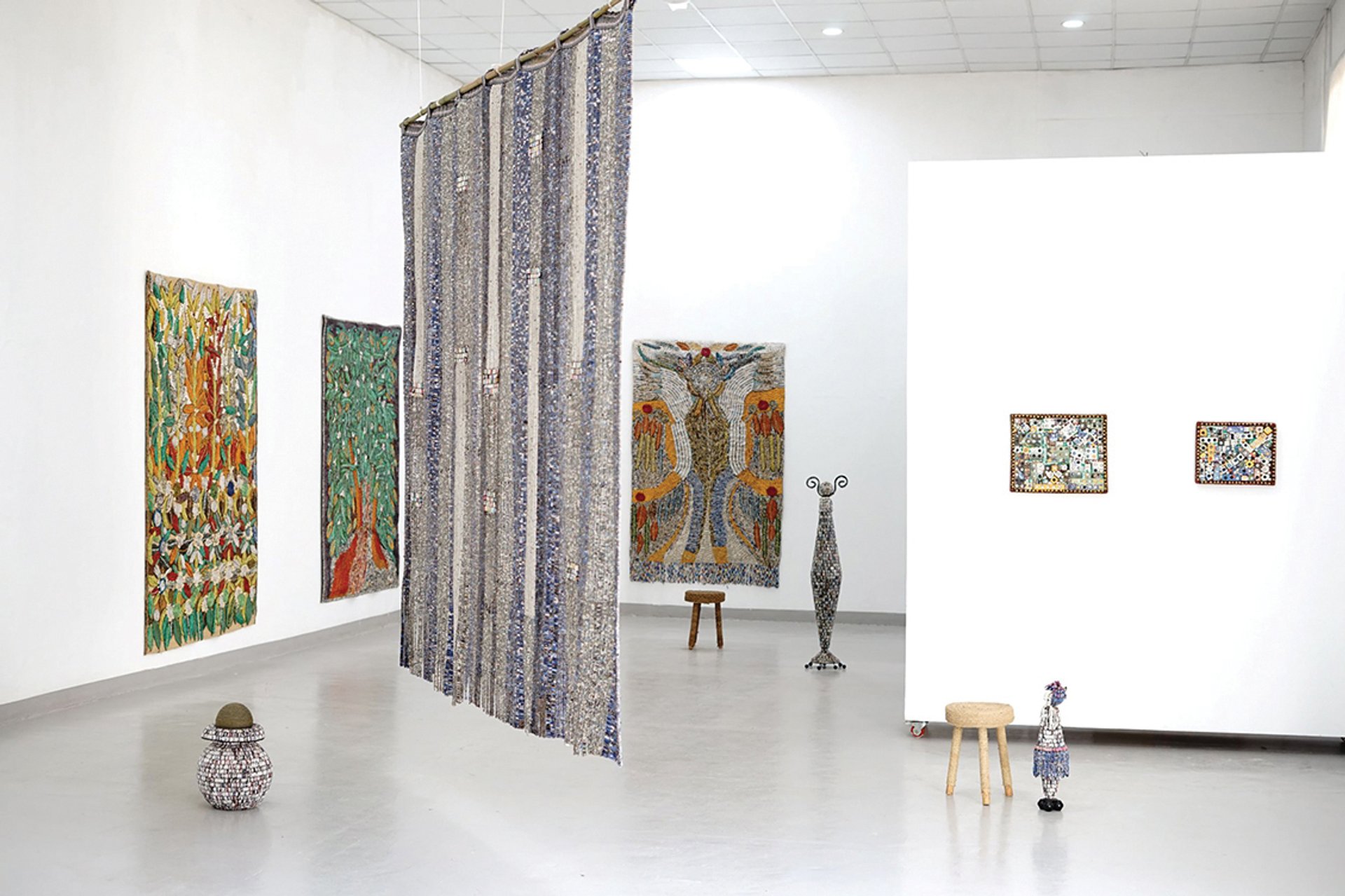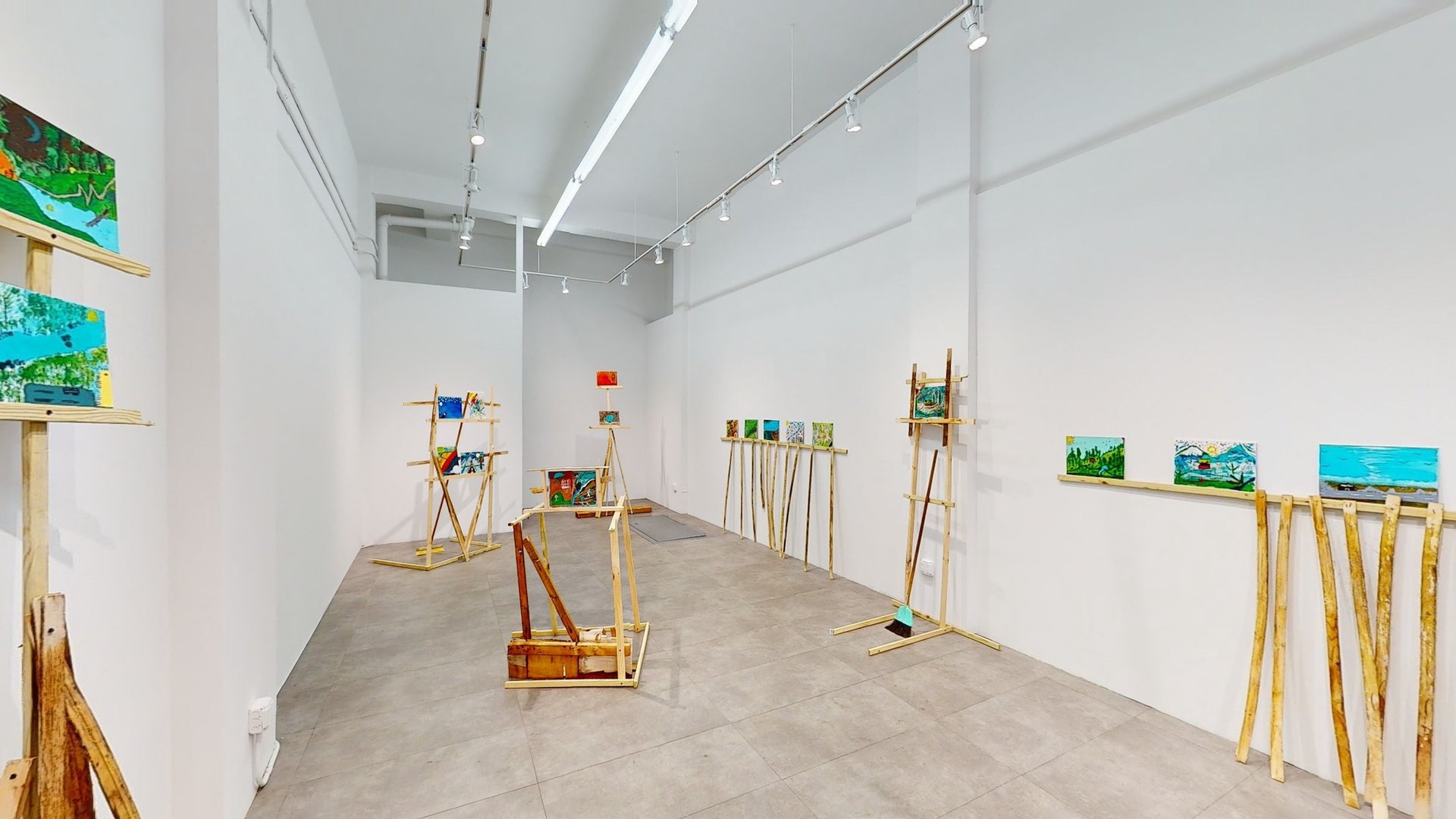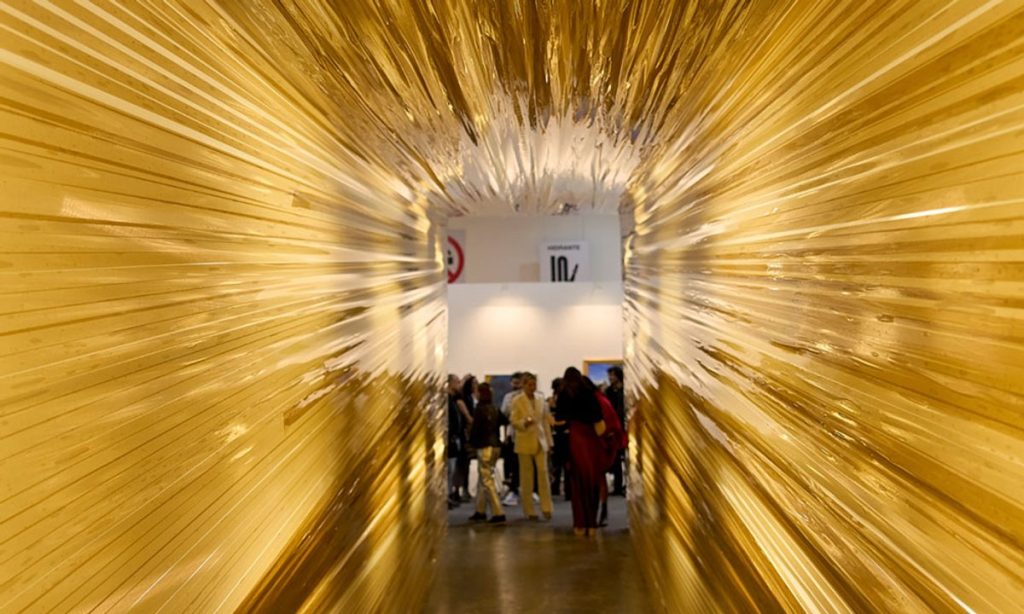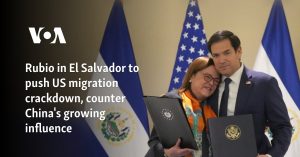Now in its 23rd year, Zona Maco (5-9 February) is technically one fair, but in practice it is more like four different fairs under one roof at the sprawling Centro Citibanamex. Its main section for Modern and contemporary art, subdivided into four sectors, is the largest, with 133 galleries from nearly 30 different countries this year. The two-sector portion of the fair devoted to design includes another 59 exhibitors, from established galleries—mainly from Mexico and the US—to up-and-coming designers in the Emergente section. The Salón del Anticuario caters to collectors with more historical tastes, with ten galleries from Mexico offering Old Masters, antiquities, jewellery and decorative art. The Foto section features 19 galleries from Mexico, the US, Peru and Europe showcasing all genres of photography.
The fair’s artistic director, Direlia Lazo, describes it as “a bridge that connects tradition and innovation, fostering dialogue among diverse voices in the art world and solidifying its place as a model for contemporary art in Latin America”.
Focus on freedom
That connective function is most apparent in the fair’s contemporary art offerings, which are divided into a main section, the Arte Moderno sector devoted to 20th-century art, the Sur section showcasing artists from the Global South, and the thematic Ejes sector, which this year is curated by Bernardo Mosqueira—the Brazilian curator and author who is the chief curator of New York’s Institute for Studies on Latin American Art—and devoted to the subject of freedom.

Zona Maco’s Ejes sector features artists from the Global South, including the Ugandan artist Sanaa Gateja at Afriart Gallery Courtesy Afriart Gallery
The fair’s main sector features many of Zona Maco’s heaviest hitters, from local mainstays like Kurimanzutto, Labor, OMR and Proyectos Monclova, to major international galleries like Galleria Continua, Galerie Nordenhake, Pace and Sundaram Tagore Gallery. But it also showcases ambitious spaces like the two-years-old Mexico City gallery Furiosa, which is making its debut at the fair with a solo stand of new sculptures incorporating salvaged and welded materials by the New York transplant Charlie Nesi.
Another gallery making its Zona Maco debut, the Kampala, Uganda-based Afriart Gallery, will devote its stand in the fair’s Ejes sector to works by two artists known for their unique approaches to craft processes: the Ethiopian fibre artist Fiker Solomon, who makes materially rich textile abstractions; and the Ugandan artist Sanaa Gateja, known as the ‘King of Beads’ for his decades-long practice of forming found paper into beads, which he then assembles into bright and stylised compositions. In the same sector, the New York-based gallery Kates-Ferri Projects has a solo stand of new works by the Salvadoran, UK-based painter, sculptor and installation artist Jose Campos, who goes by the name Studio Lenca.

A solo show by Jose Campos (aka Studio Lenca) on view at Kates-Ferri Projects, whose work the gallery is bringing to Zona Maco Courtesy Kates-Ferri Projects
The Sur sector has been organised by the Ecuadorian curator Manuela Moscoso, who is the executive and artistic director of the Center for Art, Research and Alliances in New York. Participating in Zona Maco for the first time, the Denver-based gallery K Contemporary is showing a solo stand of new works by Marielle Plaisir, a French Caribbean artist whose work examines the legacies of colonialism through installation, painting, collage, video and performance.
Also in the Sur sector, the Mexico-based gallery Suma is featuring a body of work by the Mexican British artist and anthropologist Alinka Echeverría that also examines the ripple effects of European colonialism in the Americas. Echeverría has spent more than a decade making her series The Road to Tepeyac, which chronicles the annual pilgrimage by millions of Catholics to Tepeyac hill in northern Mexico City, where in 1531 the Virgin of Guadalupe is said to have appeared to Saint Juan Diego and spoken in the pre-Columbian language Nahuatl. The hill also happens to be the site of an ancient Aztec goddess, reflecting the hybrid nature of Mexican traditions.
The fair is also bringing back a very consequential audience engagement feature that debuted last year: a $100,000 art prize awarded to the creator of one work at the fair that is chosen by a public vote. The partnership between Zona Maco and the Vienna-based Erarta Foundation sees visitors to the fair cast their ballots among a curated shortlist of works. The winning piece will be revealed on the fair’s final day, with the artist and their gallery splitting the prize money. (Last year, the winner was the Danish photographer Jacob Gils, who was showing with the Copenhagen- and Mallorca-based space In The Gallery.) At the time of the prize’s launch, Zélika Garcia, the fair’s founder, said: “This collaboration underscored our dedication to artists and galleries, and ensured a unique, ever-evolving experience for our visitors.”
- Zona Maco, 5-9 February, Centro Citibanamex, Mexico City








